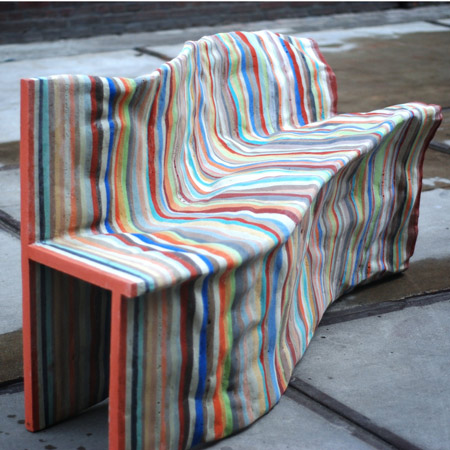
To Be Continued by Julien Carretero
Milan 08: French designer Julien Carretero presented his To Be Continued series at the Design Factory Brainport Eindhoven in Zona Tortona last month.
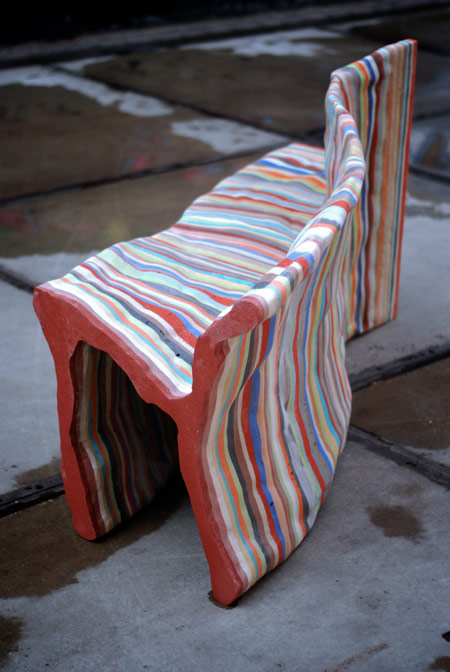
The series of furniture is cast from polyurethane resin one coloured layer at a time. The mould is made from woven polyethylene mesh which takes on the imperfections of the previous casting and adds these inaccuracies to the next layer, resulting in n extrusion which alters along its length.
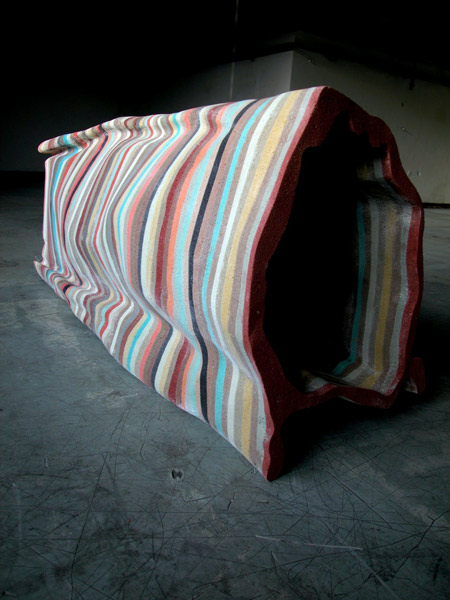
Carretero then cuts these forms to make pieces of furniture which are unique but came from the same repetitive process.
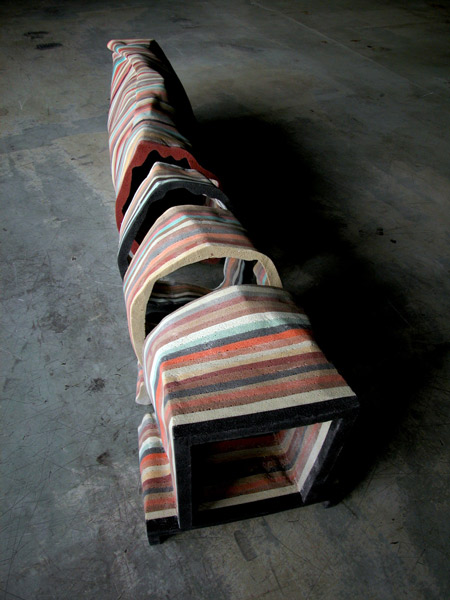
The project is a development of Themes & Variations, Carretero's Design Academy Eindhoven graduation project.
The following text is from Carretero:
--
To be continued deals with a new view on production. It aims at creating unique pieces from a serial and repetitive production method.
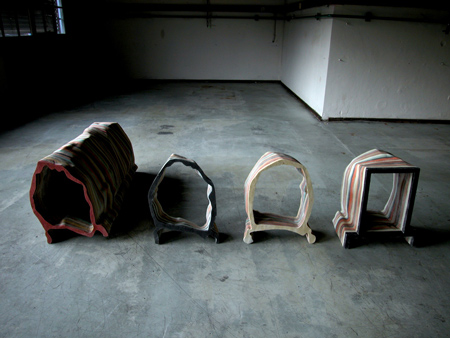
In music, a variation is a disturbing element which is applied on a theme in order to modify it. Each time the theme is repeated, a variation is added to it. As a result of this process, different themes are created, all different from each other but nevertheless part of a homogeneous whole.
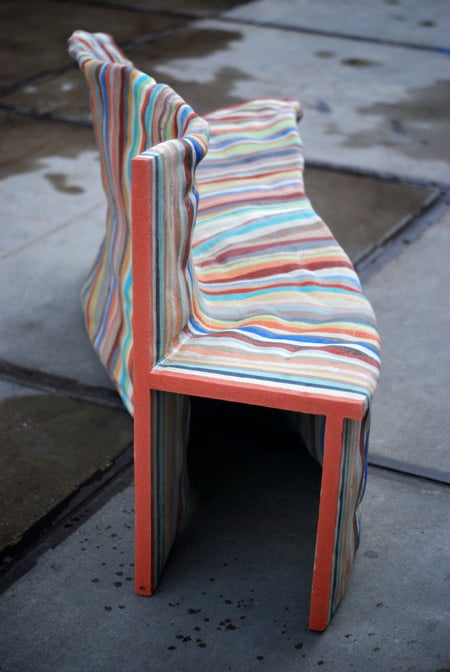
Inspired by this process, I created a production method in which the variation is part of the theme itself. So, by repeating the theme over and over within a serial production process, each element created results from the one before and leads to the one after. The objects produced are then becoming the complementary and consecutive chapters of a same story.
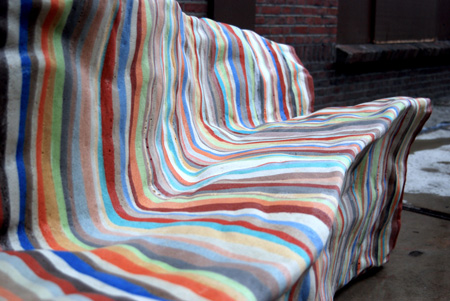
This collection is made by using a production method in which a theme including a variation is serially repeated. The repeated theme is to cast layers of material on top of each other, each layer being a copy of the layer cast just before. The variation results from the inner imperfection of this copy. Because of this process, the objects are transforming during their own production and are therefore generating their own design.
The systematic repetition of the theme is then creating an object in which its repetitive production method can be read. Then, an irregular extrusion starts to grow which, once cut into pieces, gives birth to a series of objects that are all different from each other but still linked by a shared origin.
The material used is a composite made from a polyurethane resin specifically created for this manufacturing process. The material is dyed in the mass in order to highlight the different steps of the production. The layers are cast in a supple mould made out of a woven polyethylene mesh which perfectly adapts itself to the outline of the existing layers.